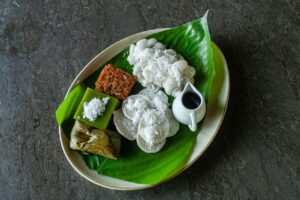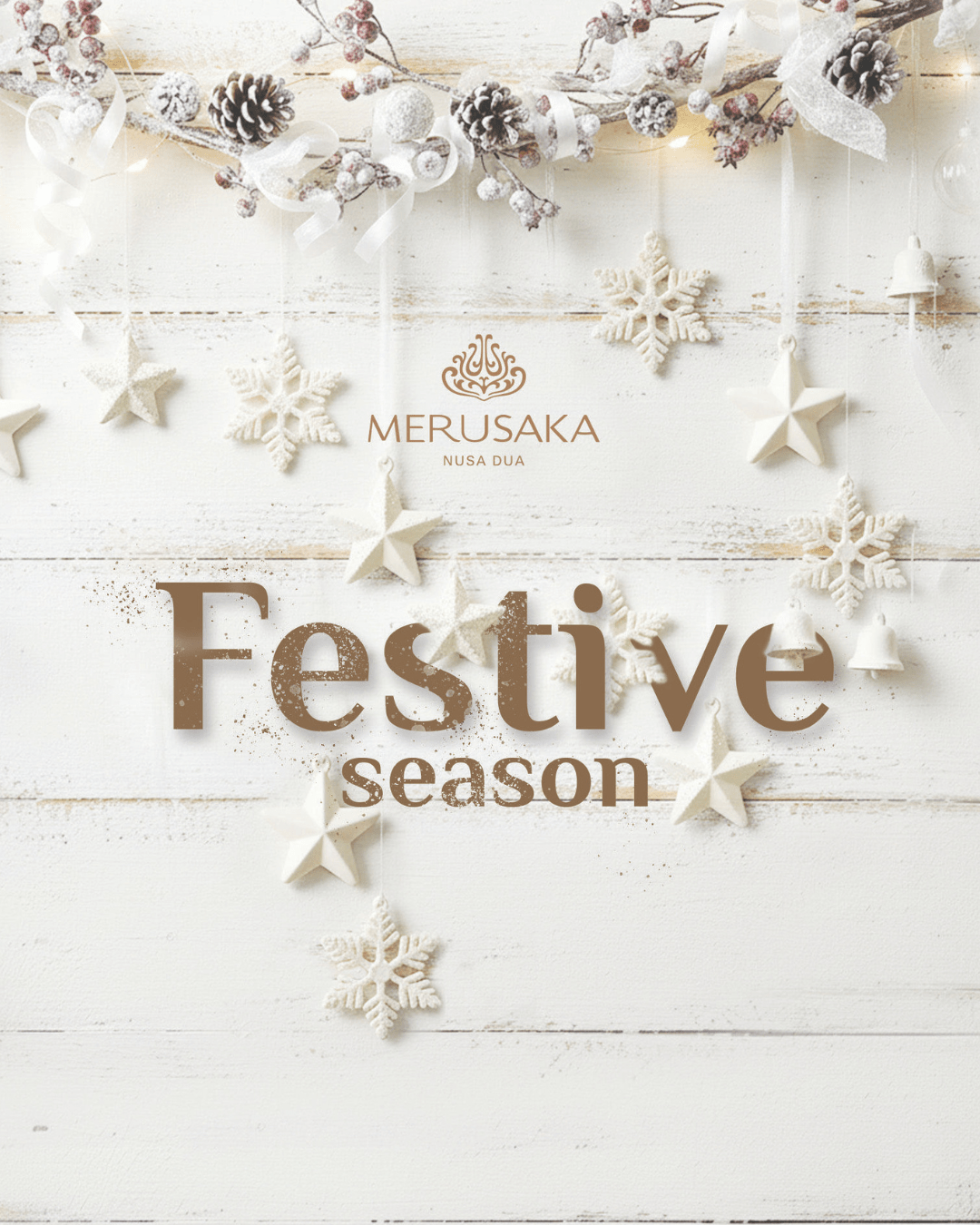Halo! While Bali’s savory, spice-rich dishes are famous, a delicious new adventure awaits you. Discover the island’s incredible variety of Balinese desserts and traditional sweets. This journey explores the gentler, sweeter side of Balinese cuisine. It builds on the foundational flavors of coconut, palm sugar, and fragrant pandan leaf.
These treats are essential to daily life and celebration in Bali. They range from warm, comforting puddings to colorful, bite-sized market cakes, known as jajan pasar. For visitors, they offer a delightful way to connect with local culture. As your friendly hosts here at Merusaka Nusa Dua, we’ve created this guide. It will help you discover some of the most popular and unmissable sweet treats the island offers.
The Heart of Balinese Sweets: Key Ingredients
Before your first bite, appreciate the beautiful, natural ingredients. They give Balinese desserts their unique soul.
- Coconut (Kelapa): Coconut is the undisputed king of Balinese sweets. People use it in every form imaginable. Rich, creamy coconut milk (santan) forms the base of puddings and sauces. Freshly grated coconut serves as a delicious coating. Toasted coconut also adds a fragrant crunch.
- Palm Sugar (Gula Merah): Forget plain white sugar! Balinese desserts sweeten with gula merah. This deep, dark sugar comes from coconut or lontar palm tree sap. It has a rich, complex, and smoky caramel flavor. It is incredibly delicious.
- Pandan Leaf: This long, green leaf is Southeast Asia’s vanilla. People use it to infuse desserts with a unique, sweet, and fragrant aroma. Often, it gives them a natural, vibrant green color.
- Glutinous Rice (Ketan): The foundation of many traditional cakes is glutinous rice, also known as sticky rice. Both white (ketan putih) and black (ketan hitam) varieties are used. It provides a satisfyingly chewy and dense texture.
Warm & Comforting: Puddings and Pancakes
These desserts offer pure Balinese soul food. They are perfect for a comforting treat. Enjoy them after dinner or on a cooler evening.
1. Bubur Injin (Black Rice Pudding)
This is a truly classic Balinese dessert. Bubur Injin, also known as Bubur Ketan Hitam, is a rich, creamy pudding. It’s made from black glutinous rice, sweetened with palm sugar, and often flavored with pandan leaves. People serve it warm. They generously drizzle it with thick, slightly salty coconut milk. This perfectly balances the pudding’s sweetness. It’s a wonderfully hearty and satisfying treat.
2. Dadar Gulung (Sweet Coconut Pandan Crepes)
These beautiful, bright green rolls delight the eye. They are even better to eat. A soft, thin crepe flavors and colors with fragrant pandan leaf juice. It wraps around a generous filling of unti. This is a moist, sweet mixture of grated coconut and melted palm sugar. They offer a perfect, light, and fragrant snack.
3. Pisang Goreng (Fried Bananas)
Simple, classic, and beloved by everyone! Pisang Goreng is the ultimate Indonesian comfort food. Sweet, ripe bananas are coated in a light, crispy batter. Then, they are deep-fried to golden perfection. You’ll find them everywhere. Look for them at street-side carts and on restaurant menus. They can be served simply on their own. Alternatively, elevate them with a drizzle of honey, a dusting of powdered sugar, or a scoop of vanilla ice cream.
A Colorful Assortment: Jaje Bali (Traditional Balinese Cakes)
One great way to sample various sweets is to order a plate of Jaje Bali. This isn’t one specific cake. Instead, it’s a delightful mixed plate of different traditional cakes, or jajan pasar (market snacks).
The Experience: It’s a fun, colorful assortment. You’ll find different textures and flavors. It is almost always served with fresh grated coconut. A drizzle of thick palm sugar syrup also accompanies it. Common components you might find include:

- Klepon: These are small, chewy green rice flour balls. They hold a surprise inside! When you bite into one, liquid palm sugar bursts in your mouth. They are then rolled in grated coconut. An absolute must-try!
- Laklak: These look like small, fluffy green pancakes. People make them from rice flour. They have a light, airy texture. This provides the perfect vehicle for sweet syrup and coconut topping.
- Cenil: These little sweets are colorful, chewy, and fun to eat. People make them from tapioca starch. Their primary role is to add a wonderful chewy texture to the mix.
Cool & Refreshing: Icy Delights
On a hot Bali day, nothing satisfies more than a sweet, icy dessert.
Es Campur (“Mixed Ice”)
This is the ultimate refreshing treat! Es Campur literally means “mixed ice.” That’s exactly what it is. A bowl is filled with shaved ice. A wild, colorful assortment of delicious toppings accompanies it. These can include grass jelly, jackfruit, avocado, tapioca pearls, sweet red beans, and nata de coco. They then generously drizzle the whole creation with condensed milk and brightly colored fruit syrups. It’s a fun, chaotic, and incredibly refreshing dessert.
Where to Find These Sweet Treats
Now that you’re craving these delights, good news! They are everywhere!
- Traditional Markets (Pasar): The best place to find fresh jajan pasar is at a local morning market. You’ll see vendors with beautiful trays of colorful, freshly made cakes.
- Night Markets (Pasar Malam): These are great spots for finding warm treats. Examples include martabak manis (a thick sweet pancake) and pisang goreng.
- Local Restaurants & Cafes: Many local restaurants and even specialty coffee shops feature selections of these traditional desserts on their menus.
- Your Resort Buffet: Often, the easiest way to try a variety is at your hotel’s breakfast or dinner buffet. Venues like our Gading Restaurant at Merusaka often feature a beautiful selection of local sweets. This allows you to sample them in a comfortable setting.
Conclusion: Discover Bali’s Sweet Side
Be adventurous on your culinary journey through Bali. Be sure to save room for dessert! Exploring the island’s unique and delicious sweets is a simple and fun way to connect with the local culture. It also connects you with the island’s natural bounty. From the comforting warmth of black rice pudding to the delightful surprise of a klepon, a sweet ending is always just around the corner.


